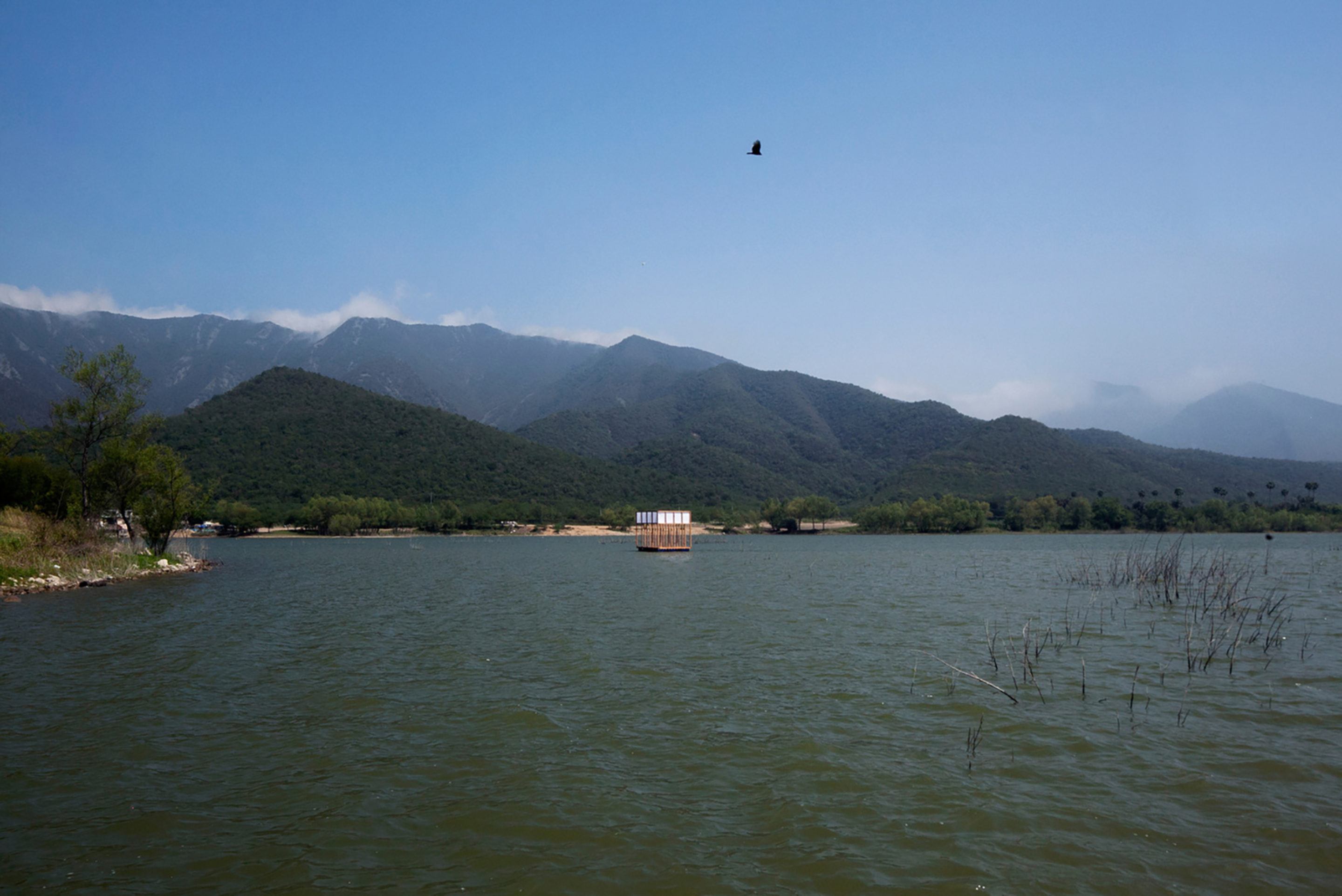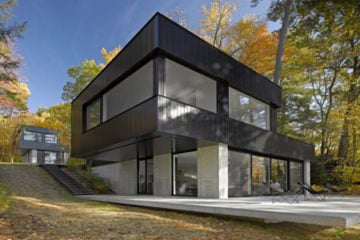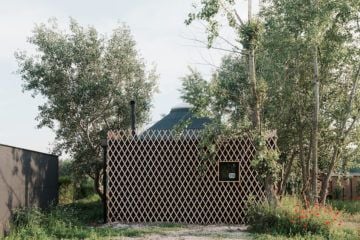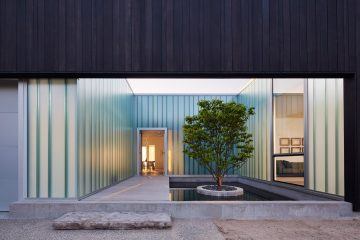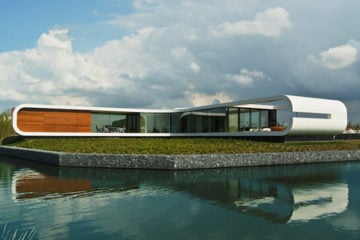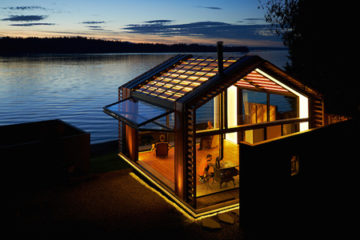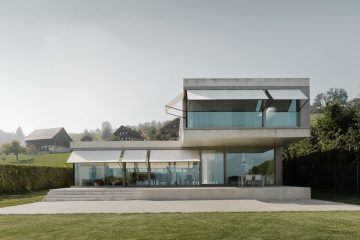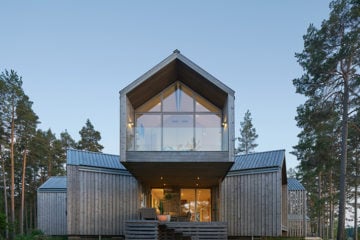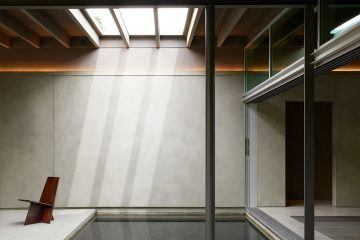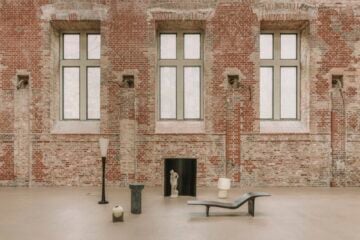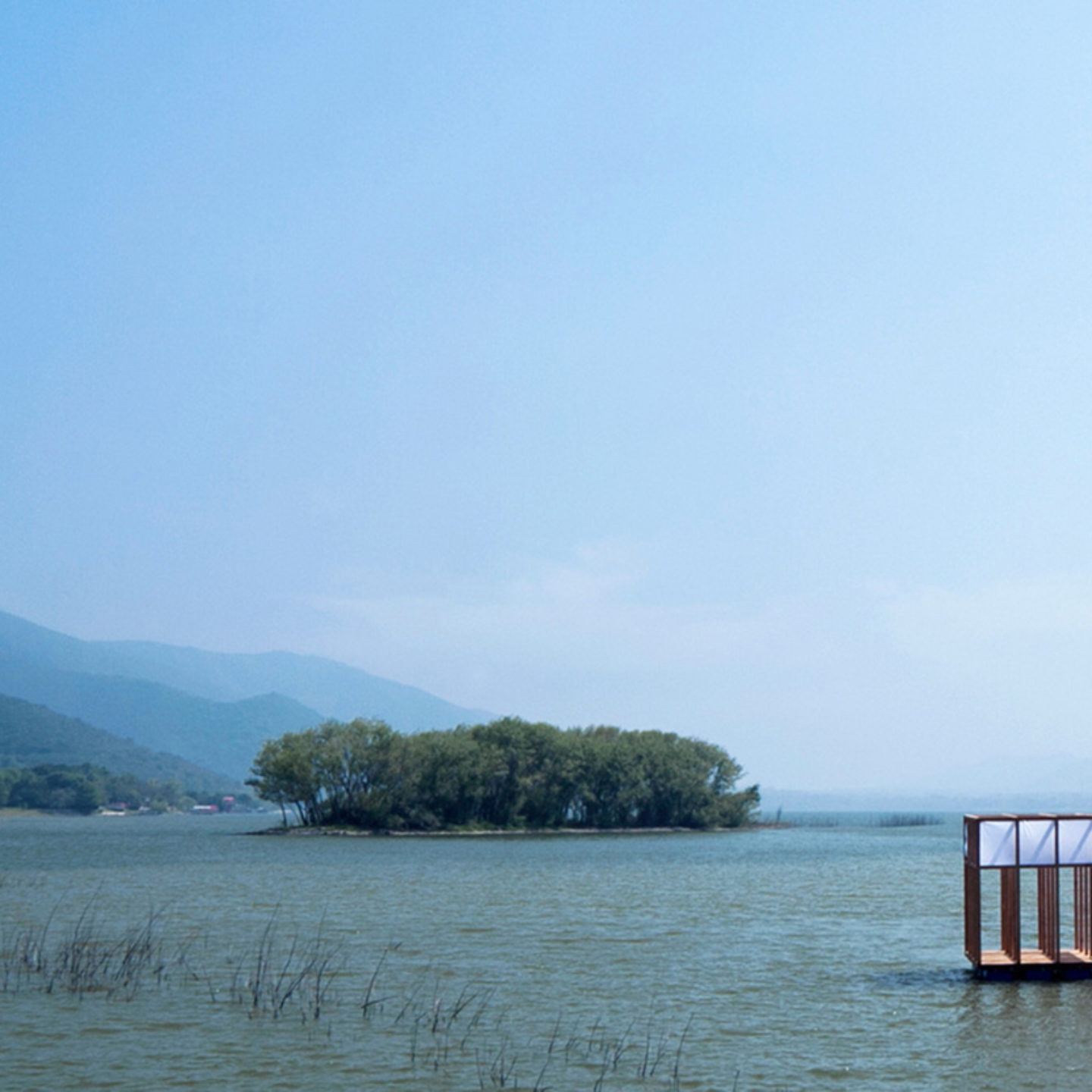
S_AR Designs A Floating Pavilion Inspired By The Journal Of A Pirate
- Name
- S_AR
- Images
- Ana Cecilia Garza Villarreal
- Words
- Rosie Flanagan
Mexican architectural design studio S-AR has designed a floating pavilion that deliberately defies classification. ‘Cámara Catamaramétrica’ is neither a barge nor a boat—instead, it acts as an island. This experimental architectural object can be found floating on the waters of Presa de La Boca in Monterrey, Mexico.
The construction of ‘Cámara Catamaramétrica’ was inspired by a 16th-century passage from British pirate, William Dampier. When sailing across the Bay of Bengal, Dampier saw traditional catamarans being built and used in a region of Tamil Nadu. Of the experience, he wrote in his journal: “The men made their way to the shore and sighted an island in the distance. The stillness of the landscape provoked in them a sense of peace that drew them towards it. They began building an instrument that would allow them to reach it, defeat the distance. Their hopeful eyes conferred strength to their work, patience and enthusiasm, combining mastery and intelligence. From their work arose a floating house, steered by the wind that filled the improvised sails that covered the windows. It carried them to the island. It was like a floating house made of wood.”
S-AR’s construction appears to be just this; a floating home made of wood. The open-sided room has been made buoyant by a system of eight air-filled tanks that sit beneath the wooden structure. The room itself has been constructed from 25 4×4 wooden columns that frame vistas and allude to the composition of a traditional building. The fabric attached along the top of the structure acts as a referential sail; for unlike a traditional catamaran, on the ‘Cámara Catamaramétrica’ you cannot dictate the way you will travel—you stand instead at the will of the weather.
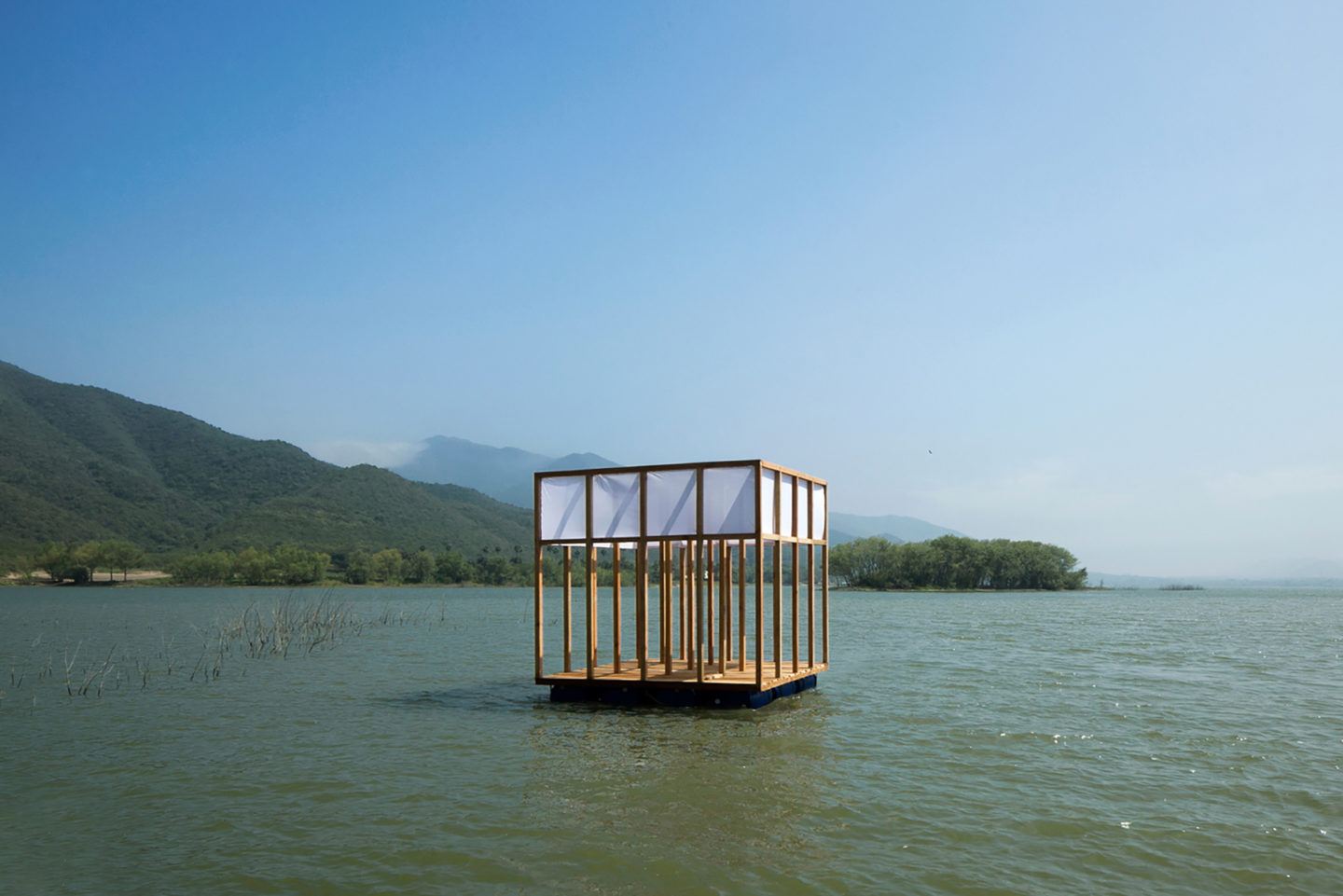
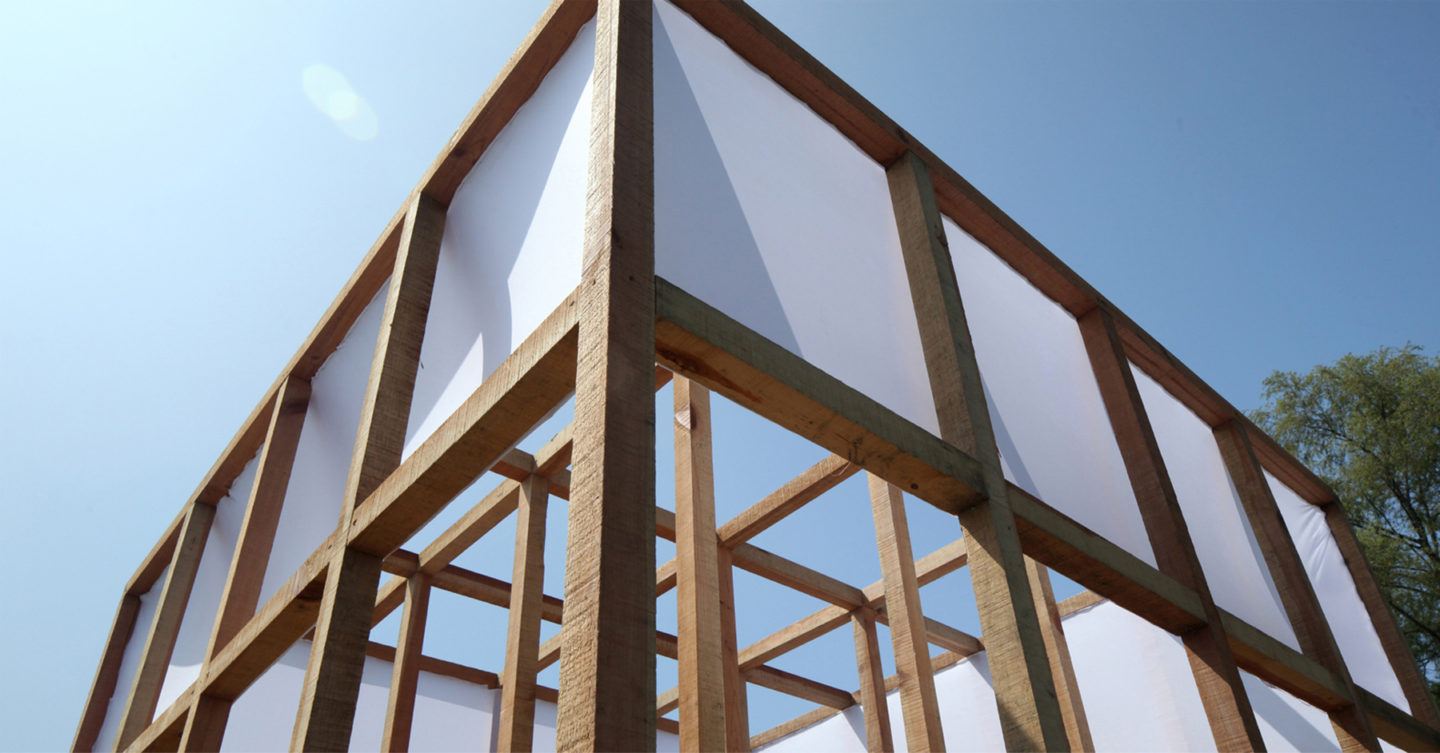
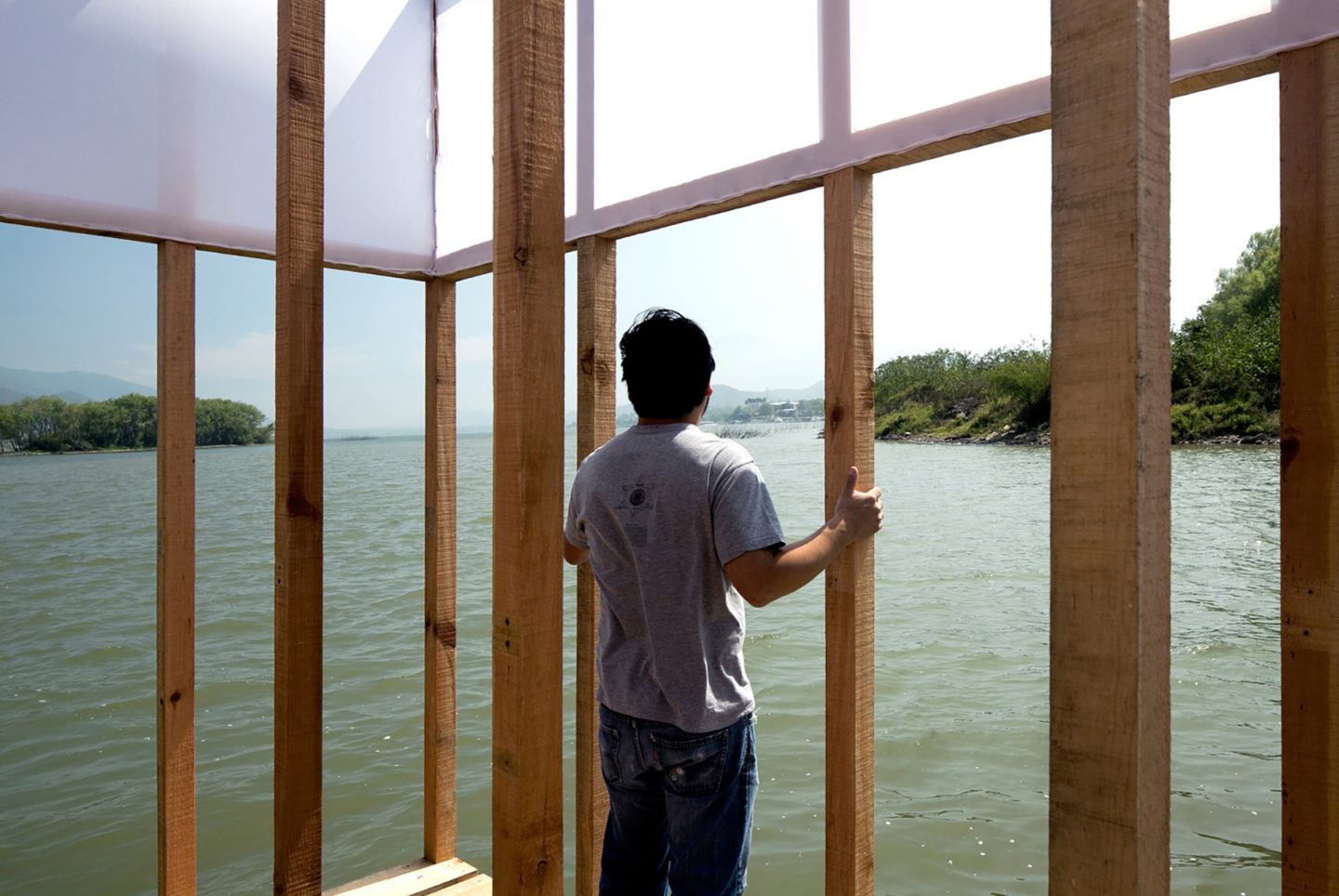
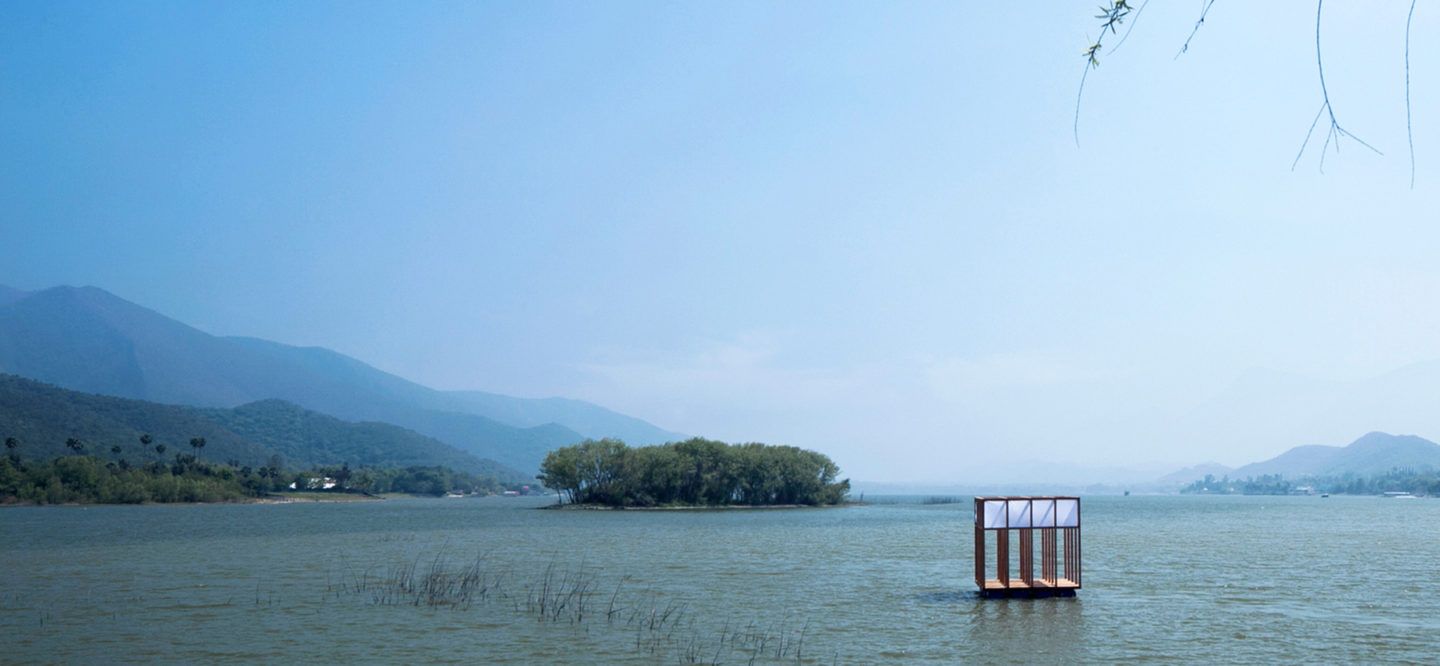
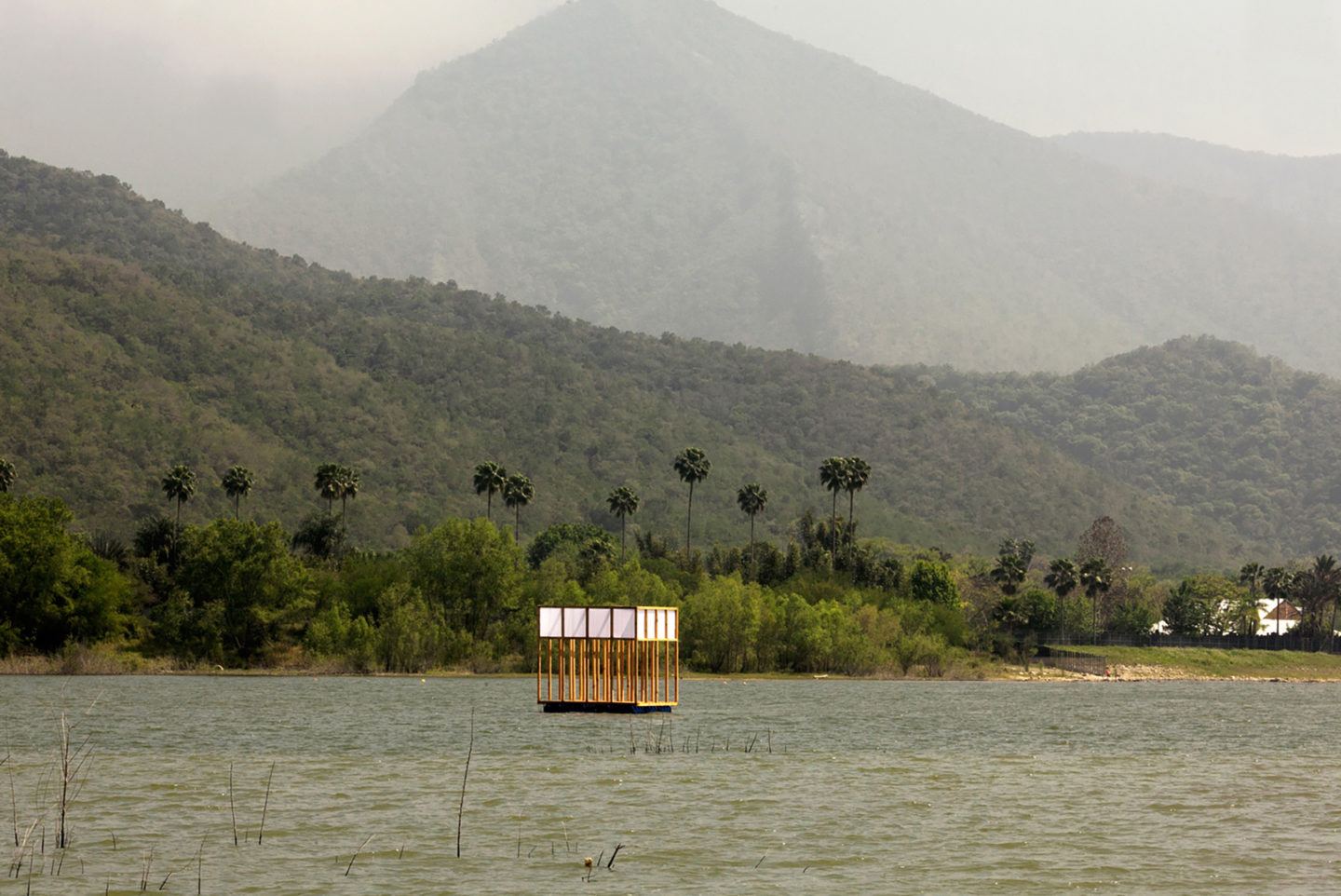
All images © Ana Cecilia Garza Villarreal
